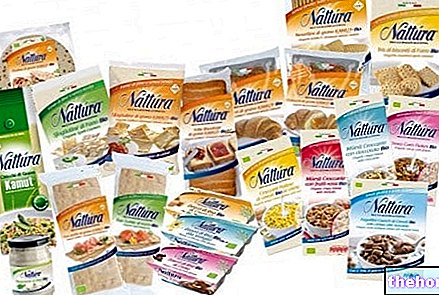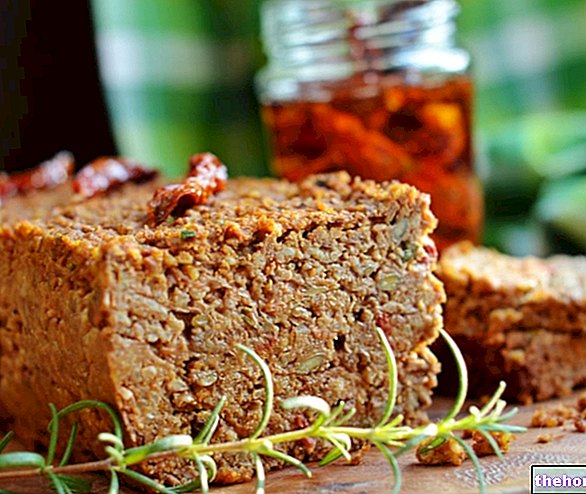Introduction
There are numerous synonyms attributed to horseradish, commonly used in the spoken language, as well as many scientific names ascribed to it: horseradish is commonly called horseradish or horseradish, and in botany it is cataloged as Armoracia rusticana, Cochlearia armoracia, Raphanus magna, Radicula armoracia And Nasturtium amoracia.

Botanical description
Horseradish is a perennial herbaceous plant belonging to the Brassicaceae family (or Cruciferae, the same as radishes, mustard and cabbage): given its luxuriance, horseradish is sometimes even considered a weed. The leaves are very large, rough, elongated, with a dark or bright green color, able to "rise up to one meter in height;" the flowers, small and white, are grouped in racemes and are distinguished by the particular cross arrangement of the petals.
We have seen that horseradish is widely cultivated for the root: it is a taproot, whitish-yellow in color, pulpy and elongated.
Horseradish has an acrid, pungent taste, comparable to that of mustard; the roots are harvested in late summer-early autumn.
Horseradish prefers fertile soils, with a high degree of humidity, and is preferably grown in little shaded environments.
Horseradish is believed to have originated in the Balkan Peninsula but, more generally, horseradish originates from central and southern Europe.
Horseradish sauce
As mentioned, horseradish is used for food use to prepare acidic and pungent sauces: some define horseradish as a sort of wasabi, but extremely less spicy. The taste, in fact, although acrid, is not spicy or, better said, the root is sweet but strongly balsamic and aromatic: in excessive doses it can induce tearing.
Generally, horseradish sauce is prepared with grated horseradish root, to which vinegar and breadcrumbs are added; however, there are many variations of horseradish sauce.
Although in Italy the horseradish is appreciated in the northern regions, in Basilicata an interesting variant of this sauce is prepared: the grated horseradish is mixed with eggs, parsley, black pepper and strong cheeses (eg pecorino), to prepare tasty omelettes. In other regions, however, the horseradish is grated directly into the dish and mixed with cheese.
The horseradish sauce is masterfully suited to accompany boiled meats, smoked fish, eggs and cheeses: for those who love strong and decisive flavors, horseradish is perfectly suited to flavor all dishes.
Each region is characterized by its own typical dishes: in Basilicata, for example, not only the root is used of the horseradish, but also the leaves, which are excellent for cooking cabbage soups.
Cren sauce
Problems with playing the video? Reload the video from youtube.
- Go to the Video Page
- Go to the Video Recipes Section
- Watch the video on youtube
Horseradish: properties

Furthermore, considerable quantities of vitamin B1 and C are also found in horseradish, as well as a modest quantity of essential oil (ranging from 0.5 to 1%). It is estimated that 100 g of horseradish provide about 48 Kcal.
Therapeutic uses
Despite being known for its uses in the culinary field, it should be pointed out that horseradish, due to its particular chemical composition, is widely used as a natural therapeutic remedy.
Horseradish is used in the treatment of rheumatism, bronchitis and breathing difficulties in general. In addition, horseradish appears to be suitable for stimulating diuresis, treating urinary tract infections and promoting digestion.
However not recommended for those suffering from gastric problems, kidney problems, heartburn and ulcers. Pregnant women should refrain from consuming horseradish.
In the field of folk medicine, horseradish is also used for topical use: in this regard, it is used against alopecia (being characterized by rubefacant substances) and herpes dermatosis.
Summary
Horseradish: to fix the concepts ...
Botanical names: Armoracia rusticana, Cochlearia armoracia, Raphanus magna, Radicula armoracia And Nasturtium amoracia
Description: very luxuriant plant, almost a weed
Leaves: very large, rough, elongated with a dark or bright green color
Flowers: small, white, grouped in racemes
Petals: particular cross arrangement
Root: taproot, pulpy and elongated
Root color: yellowish-white
Soil: fertile, with a high degree of humidity
Basilicata horseradish sauce: grated horseradish mixed with eggs, parsley, black pepper and strong cheeses (e.g. pecorino)
Another variant of the sauce: the horseradish is grated directly into the dish and mixed with cheese
Excellent to accompany meats, eggs, smoked fish, cheeses, boiled meats
- glucosinated compounds: glucoclearin, singroside, gluconasturtiin → hydrolysis: isothiocyanates and isocyanates
- coumarins, phenols and resins
- vitamin B1 and C
- modest amount of essential oil (ranging from 0.5 to 1%)
- Against rheumatism, bronchitis and breathing difficulties in general
- It stimulates diuresis
- Treats urinary tract infections
- Promotes digestion
- Recommended, topically, against alopecia and herpes dermatosis
- Gastric problems
- Kidney ailments
- Stomach ache
- Ulcer
- Pregnant women
Other Foods - Spices Garlic Dill Cinnamon Cren Curry Daikon Broth Cube Tarragon Monosodium Glutamate Mace Nutmeg Oregano Paprika Black Pepper Green Pepper Pepper Cayenne Pepper Chilli Pepper Parsley Horseradish Rosemary Dietary Salt Whole Salt Iodized Salt Hyposodic Salt Salt Pink Himalayan Salt Mustard Tabasco Vanilla Wasabi Ginger OTHER ITEMS SPICES Categories Food Alcoholics Meat Cereals and derivatives Sweeteners Sweets Offal Fruit Dried fruit Milk and derivatives Legumes Oils and fats Fish and fishery products Salami Spices Vegetables Health recipes Appetizers Bread, Pizza and Brioche First courses Second courses Vegetables and Salads Sweets and Desserts Ice creams and sorbets Syrups, liqueurs and grappas Basic Preparations ---- In the Kitchen with Leftovers Carnival Recipes Christmas Recipes Dietary Recipes Light Recipes Woman's Day, Mother's Day, Dad's Day Functional Recipes International Recipes Easter Recipes Recipes for Celiacs Recipes for Diabetics Recipes for the Holidays Recipes for Valentine's Day Vegetarian Recipes Protein Recipes Regional Recipes Vegan Recipes




























